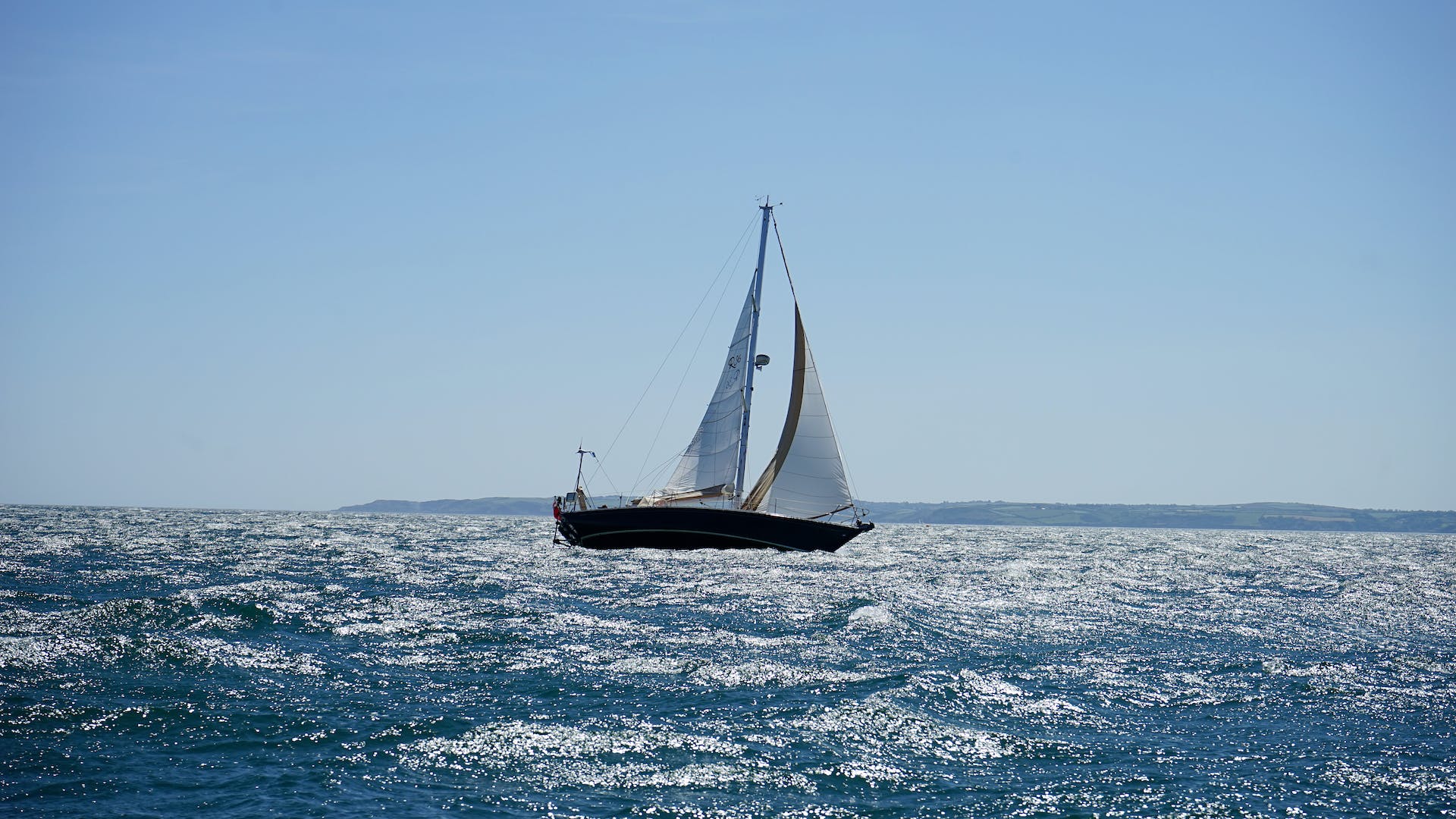How Much Wind Is Too Much For Boating?
Introduction
Sailing is an incredibly exhilarating and enjoyable experience, but it can also be dangerous if the wind is too strong, as it can easily capsize small boats and cause significant damage to larger vessels. Therefore, it’s important for sailors to understand how much wind is too much for boating in order to stay safe and avoid hazardous situations while out on the water.
This article will provide an overview of how wind affects sailing, what types of boats are most vulnerable to strong winds, and tips on how to stay safe while boating in the face of strong gusts of wind.
How Wind Affects Sailing
Wind plays a major role in determining the success or failure of a sailboat voyage – especially when it comes to speed and direction! Knowing how the wind interacts with sails, rigging, masts and hulls can help sailors better understand their vessel’s performance in different conditions and make informed decisions about their course or destination accordingly.
When a sailor sets sail they must take into account both the speed and strength of the prevailing winds as well as the direction they are coming from in order to make sure their vessel isn’t pushed off-course or overburdened by gusts that are too strong for their vessel’s design parameters.
Types of Boats and Their Vulnerability to High Winds
The type of boat used for sailing will also determine its vulnerability to strong winds – smaller boats made from lighter materials such as fiberglass or wood are more susceptible to being capsized by strong gusts than larger vessels made from heavier materials such as steel or aluminum that are better able to withstand higher winds without capsizing due to their greater stability in rough waters.
In addition, racing sailboats tend to have deeper draft depths than cruising boats, which means they may be more vulnerable when encountering higher waves due to their increased weight displacement ratio compared with other types of vessels designed specifically for cruising purposes (ease of movement through shallow waters).
Generally speaking, most recreational sailboats can handle winds up to 25 knots (29 mph) safely before needing additional crew assistance or reduced sails in order to prevent capsizing, although this may vary depending on the type/design/materials used in construction as well as other environmental factors such as water temperature or wave height/direction etc.
What Is Considered Too Much Wind For Sailing?
Generally speaking, most experts agree that wind gusts of 34 knots (39 mph) or more are often strong enough to capsize small boats, especially when they catch the boater off-guard and without enough time or preparation for dealing with such conditions safely – such as dropping sails entirely if necessary or immediately returning back towards shore if possible/advisable etc.
However, larger vessels may be able withstand higher winds depending on their design/construction materials etc., which means it’s important for sailors on these types of vessels to always err on the side caution when considering whether a particular situation may present too much risk due them being outmatched by Mother Nature’s forces!
Sailors Safety Tips For Dealing With High Winds
When facing potentially hazardous conditions out at sea due to high winds, sailors should always remember these key points: drop all sails immediately if necessary, reduce your speed, increase your awareness, use appropriate equipment, check all lines frequently, secure all loose items, wear a life jacket at all times, watch out for other vessels nearby, be prepared with an emergency plan/kit onboard, radio distress signals if needed, return towards shore if necessary etc.. It’s essential that these tips are followed at all times while out on the water – even if you don’t think you’re facing dangerous conditions just yet!
Techniques For Reducing The Risks Associated With High Winds
There are several techniques that boaters can employ in order reduce risks associated with high winds: using heavier lines that won’t snap easily under stress from gusts, having more crew onboard who can help manage lines quickly and efficiently during heavy weather conditions, using storm jibs instead of full mainsails when heading into rough waters (as this helps keep control over your vessel), avoiding anchoring near shorelines during storms (as this increases your risk due wave surge), using reefing systems (where possible) which allow you adjust sails quickly depending on conditions etc.
It’s also important that sailors always know where they’re going before setting off so they can plan ahead accordingly – taking into account any potential weather forecasts along their route etc..
How To Know When A Storm Is Coming
When out at sea it’s important that sailors understand how storms form so they can react appropriately when one approaches – some signs include dark clouds gathering overhead accompanied by thunderstorms / lightning strikes nearby as well as rapidly increasing waves/wind speeds etc.
It’s also important that sailors keep track of changing weather patterns within their immediate vicinity so they can make decisions about whether continuing with a voyage is still safe based upon current conditions – remember: safety first!
Effects Of Different Types Of Storms On Sailing
The effects that different types storms have on sailing vary greatly depending what kind it is – some will bring high winds & heavy rain whereas others may bring significantly larger waves which could potentially swamp a boat if not taken into consideration beforehand (which is why understanding weather forecasts beforehand is essential!).
Hurricanes & typhoons tend have the most devastating effects due extremely large waves combined with powerful gales which could easily capsize small boats even while tied up securely at dockside! So it pays dividends for any sailor planning a long-distance voyage away from port (especially where bad weather is expected)to have additional safety measures onboard such as extra supplies & fuel tanks filled up completely before setting off!
What Equipment Should Be Used During High Wind Sailing?
When venturing out into potentially hazardous conditions caused by strong winds it’s essential that sailors ensure they have all necessary safety equipment ready onboard: lifejackets & flares should be checked regularly & kept close at hand just incase someone goes overboard, emergency radios should be tuned into relevant frequencies so distress calls can be sent quickly & accurately if needed, GPS systems should be updated regularly & kept switched on so navigational routes can be monitored closely & accurate bearings taken throughout each leg journey etc.. All these devices (and more!) are essential tools that every sailor should carry onboard during any voyage regardless what type vessel they’re using!
How To Prepare A Boat For High Wind Sailing?
Before setting off into potentially hazardous waters caused by high-wind gusts there are certain steps every sailor needs take ensure their vessel is ready: check lines thoroughly ensuring all connections secure & tight so there no chance them snapping under pressure caused by gusty weather patterns, double-check mast rigging making sure no hardware has been left loose after any recent repairs/maintenance work has been done recently etc., inspect hull closely looking any potential damage caused by wear & tear over time which could reduce its overall buoyancy levels & increase chances sinking under extreme circumstances etc.. All these steps need taken ensure boat remains seaworthy & capable handling whatever Mother Nature throws its way!
Conclusion
Sailing can provide us immense pleasure, but when the wind speed increases beyond safe limits it becomes dangerous very quickly – both for us and our vessel alike!
As such, understanding how much wind is too much for boating should always take priority over any other considerations – especially when planning longer voyages away from port where bad weather could easily catch us off-guard without enough time prepare ourselves adequately beforehand!
By following all necessary safety protocols outlined this article we hope you’ll able enjoy many successful voyages across open seas without putting yourself or others risk – happy sailing everyone!!







